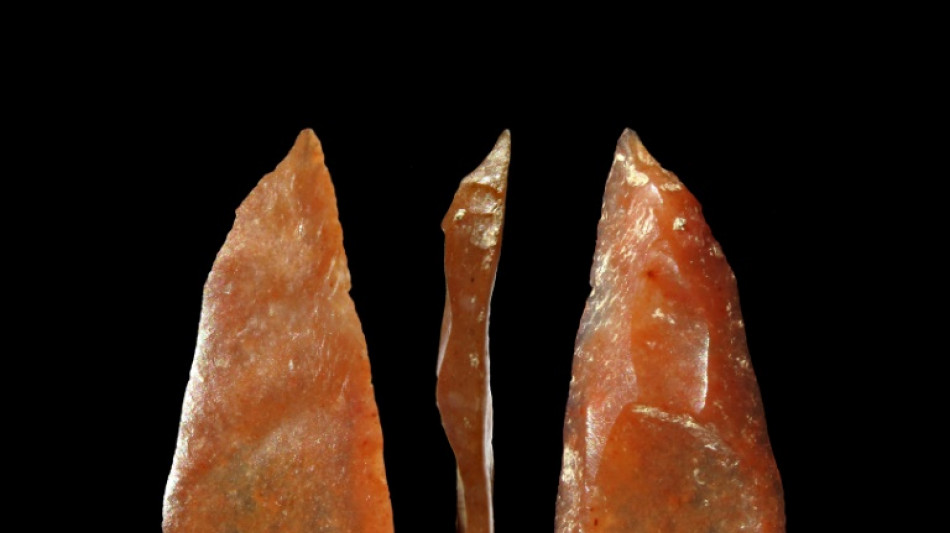
-
 Russia hits Ukraine energy sites, killing one, wounding children
Russia hits Ukraine energy sites, killing one, wounding children
-
Asia markets fluctuate as investors mull Trump-Xi talks

-
 Trump, Xi ease fight on tariffs, rare earths
Trump, Xi ease fight on tariffs, rare earths
-
Volkswagen posts 1-billion-euro loss on tariffs, Porsche woes

-
 'Fight fire with fire': California mulls skewing electoral map
'Fight fire with fire': California mulls skewing electoral map
-
Fentanyl, beans and Ukraine: Trump hails 'success' in talks with Xi
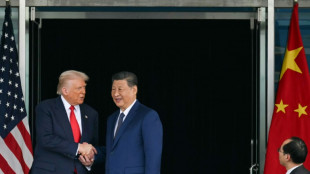
-
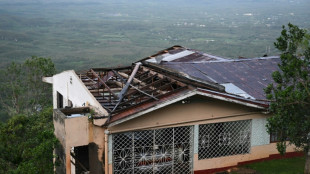 'Nowhere to sleep': Melissa upends life for Jamaicans
'Nowhere to sleep': Melissa upends life for Jamaicans
-
Irish octogenarian enjoys new lease on life making harps
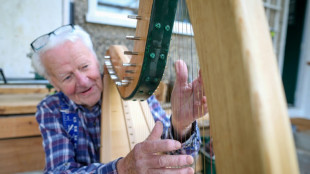
-
 Tanzania blackout after election chaos, deaths feared
Tanzania blackout after election chaos, deaths feared
-
G7 meets on countering China's critical mineral dominance

-
 Trump hails tariff, rare earth deal with Xi
Trump hails tariff, rare earth deal with Xi
-
Court rules against K-pop group NewJeans in label dispute

-
 India's Iyer says 'getting better by the day' after lacerated spleen
India's Iyer says 'getting better by the day' after lacerated spleen
-
Yesavage fairytale carries Blue Jays to World Series brink

-
 Bank of Japan keeps interest rates unchanged
Bank of Japan keeps interest rates unchanged
-
Impoverished Filipinos forge a life among the tombstones
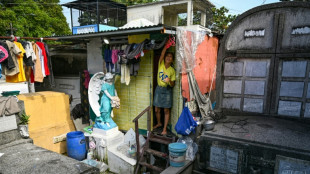
-
 Jokic posts fourth straight triple-double as Nuggets rout Pelicans
Jokic posts fourth straight triple-double as Nuggets rout Pelicans
-
UN calls for end to Sudan siege after mass hospital killings

-
 Teenage Australian cricketer dies after being hit by ball
Teenage Australian cricketer dies after being hit by ball
-
As Russia advances on Kupiansk, Ukrainians fear second occupation
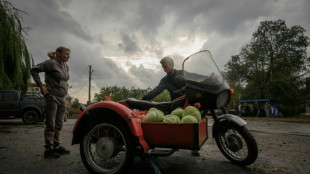
-
 Trade truce in balance as Trump meets 'tough negotiator' Xi
Trade truce in balance as Trump meets 'tough negotiator' Xi
-
China to send youngest astronaut, mice on space mission this week

-
 Yesavage gem carries Blue Jays to brink of World Series as Dodgers downed
Yesavage gem carries Blue Jays to brink of World Series as Dodgers downed
-
With inflation under control, ECB to hold rates steady again

-
 Asia stocks muted with all eyes on Trump-Xi meeting
Asia stocks muted with all eyes on Trump-Xi meeting
-
Personal tipping points: Four people share their climate journeys

-
 Moto3 rider Dettwiler 'no longer critical' after crash: family
Moto3 rider Dettwiler 'no longer critical' after crash: family
-
US economy in the dark as government shutdown cuts off crucial data

-
 Trump orders nuclear testing resumption ahead of Xi talks
Trump orders nuclear testing resumption ahead of Xi talks
-
'Utter madness': NZ farmers agree dairy sale to French group

-
 Samsung posts 32% profit rise on-year in third quarter
Samsung posts 32% profit rise on-year in third quarter
-
30 years after cliffhanger vote, Quebec separatists voice hope for independence

-
 Taxes, labor laws, pensions: what Milei wants to do next
Taxes, labor laws, pensions: what Milei wants to do next
-
South Sudan's blind football team dreams of Paralympic glory

-
 US says 4 killed in new strike on alleged Pacific drug boat
US says 4 killed in new strike on alleged Pacific drug boat
-
What we do and don't know about Rio's deadly police raid

-
 'They slit my son's throat' says mother of teen killed in Rio police raid
'They slit my son's throat' says mother of teen killed in Rio police raid
-
Arteta hails 'special' Dowman after 15-year-old makes historic Arsenal start

-
 Google parent Alphabet posts first $100 bn quarter as AI fuels growth
Google parent Alphabet posts first $100 bn quarter as AI fuels growth
-
Underwater 'human habitat' aims to allow researchers to make weeklong dives
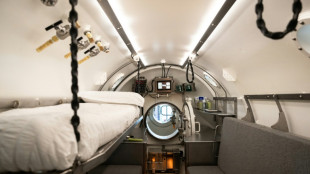
-
 Maresca slams Delap for 'stupid' red card in Chelsea win at Wolves
Maresca slams Delap for 'stupid' red card in Chelsea win at Wolves
-
'Non-interventionist' Trump flexes muscles in Latin America

-
 Slot defends League Cup selection despite not meeting 'Liverpool standards'
Slot defends League Cup selection despite not meeting 'Liverpool standards'
-
'Poor' PSG retain Ligue 1 lead despite stalemate and Doue injury
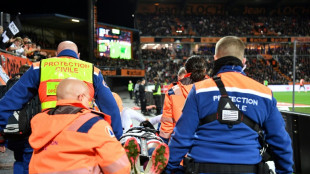
-
 Liverpool crisis mounts after League Cup exit against Palace
Liverpool crisis mounts after League Cup exit against Palace
-
Kane scores twice as Bayern set European wins record

-
 Radio Free Asia suspends operations after Trump cuts and shutdown
Radio Free Asia suspends operations after Trump cuts and shutdown
-
Meta shares sink as $16 bn US tax charge tanks profit

-
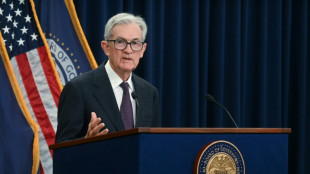 Dollar rises after Fed chair says December rate cut not a given
Dollar rises after Fed chair says December rate cut not a given
-
Google parent Alphabet posts first $100 bn quarter as AI drives growth


Study places Homo sapiens in Europe earlier than thought
Homo sapiens ventured into Neanderthal territory in Europe much earlier than previously thought, according to an archaeological study published in Science magazine on Wednesday.
Up to now, archaeological discoveries had indicated that Neanderthals disappeared from the European continent about 40,000 years ago, shortly after the arrival of their "cousin" Homo sapiens, barely 5,000years earlier and there was no evidence of an encounter between these two groups.
The new discovery, by a team of archaeologists and palaeoanthropologists led by Ludovic Slimak of Toulouse University, pushes back the arrival of Homo sapiens in Western Europe to around 54,000 years ago.
Another remarkable finding of the research is that the two types of humans alternated in inhabiting the Mandrin cave in what is now the Rhone region of southern france.
The Mandrin site, first excavated in 1990, includes layer upon layer of archaeological remains dating back over 80,000 years.
"Mandrin is like a kind of neandertalian Pompeii, without catastrophic events, but with continuous filling of sands in the cave deposited progressively by a strong wind, the Mistral," Slimak told AFP.
His team uncoevered a layer, known as the "E layer", containing at least 1,500 cut flint points, more finely executed than the points and blades in the layers above and below.
Very small in size, some of them less than a centimetre in length, these points "are standardised, to the nearest millimetre, something we haven't seen at all with Neanderthals," said Slimak, a specialist in Neanderthal societies.
These, he explained, were probably arrowheads, unknown in Europe at that time.
He attributes this production to a culture called Neronian, linked to several sites in the Rhone area.
- Milk tooth discovery -
In 2016, Slimak and his team visited the Peabody Museum in Harvard to compare their discoveries with a collection of carved fossils from the Ksar Akil site at the foot of Mount Lebanon, one of the major sites of the expansion of Homo sapiens to the east of the Mediterranean.
The similarity between the techniques used convinced Slimak that the findings at the Mandrin site were the first traces of Home Sapiens found in Europe.
A milk tooth found in the "E layer" confirmed his suspicions.
In all researchers found nine teeth at the Mandrin cave site, belonging to six individuals.
These ancient teeth were entrusted to Clement Zanolli, a palaeoanthropologist at the University of Bordeaux.
Using microtomography, similar to medical scanning technology, the verdict was clear.
The milk tooth from the "E" layer" was the only modern human tooth found at the site.
That "fossil molar from a modern human child provides the earliest known evidence of modern humans in western Europe", the Natural History Museum in London said in a statement.
- Co-existence? -
The archaeological team then used a pioneering technique, fuliginochronology, which analyses layers of soot impregnating the walls of a cave and the traces of ancient fires.
The reachers demonstrated that "this Modern human population occupied this Rhone territory for some 40 years," said Slimak.
At some point, the two populations either co-existed in the cave or on the same territory, the researcher concluded.
He imagines that Neanderthals could have served as guides to Homo Sapiens to lead him to the best sources of flint available, some of which were located up to 90 kilometres (55 miles away.
"Nothing new under the sun… This is precisely what happened when Europeans began the colonization of the Americas or Australia," he noted.
"The findings from Mandrin are really exciting and are another piece in the puzzle of how and when modern humans arrived in Europe,? concludes Professor Chris Stringer, co-author of the study and a specialist in human evolution at the Natural History Museum in London.
"Understanding more about the overlap between modern humans and other hominins in Eurasia is vital to understanding more about their interactions, and how we became the last remaining human species," he added.
This overlap, which was evident in Mandrin, now places the Rhone region as a "major migration corridor (for Homo sapiens) enabling them to reach the Mediterranean and continental European areas", said Slimak, who promises more discoveries from the Mandrin site.
W.Lapointe--BTB

